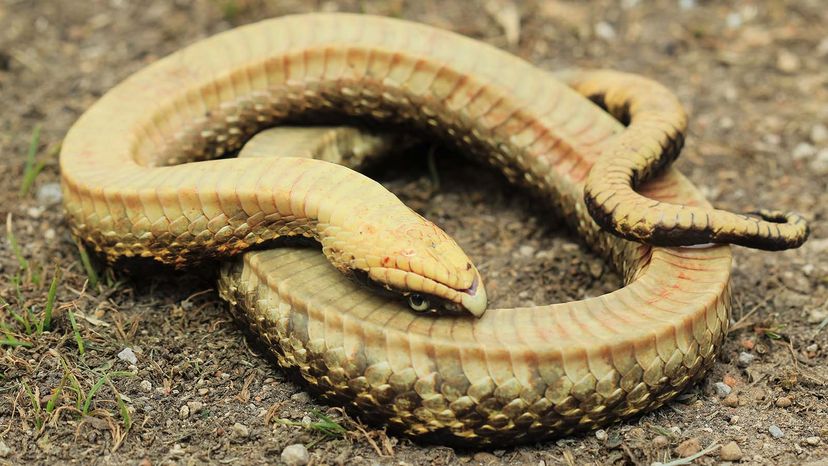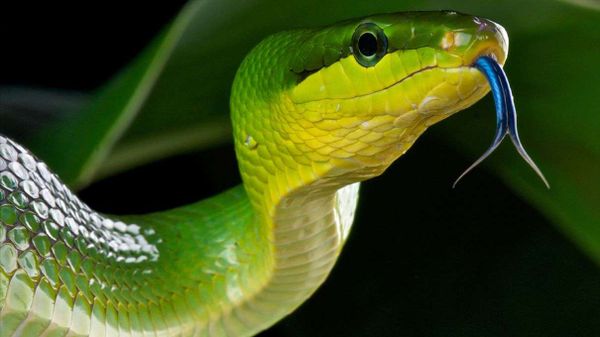Like all snakes, hognoses eat meat. And they're best known for hunting down toads. While the snakes don't constrict, they do inject a mild venom through a pair of large fangs housed near the back of the mouth.
We want to take a second to note that toads come with their own anti-predator defenses. One technique the amphibians may use involves puffing themselves up to appear bigger.
Some naturalists think hognose snakes can counter that trick in a pretty gruesome way. Though this hasn't actually been documented, Heterodon snakes might be using their fangs to puncture the lungs of the toads they consume. A deflated toad is no doubt easier to swallow.
Besides toads, hognoses eat prey like fish, lizards, rodents, salamanders, small birds, eggs and invertebrates (such as earthworms).
The western hognose's dietary habits may change with age. In a 2017 study, researchers tested wild specimens from the Illinois countryside. Chemical data suggested the juvenile snakes were eating a lot of racerunner lizards — along with the eggs those lizards produce.
Meanwhile, it seems the adults preferred to gorge themselves on turtle eggs.





